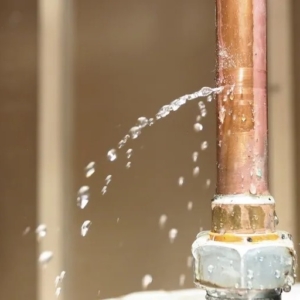Pipe Freeze, Part 2 of 3
The Weakest Link – Vulnerable Points in Piping
We previously mentioned how the weakest point may be exceptionally weak (cannot withstand even the slightest pressure) or it may be commonly weak (due to components like joints or connections which are naturally weaker than the pipes). Here we delve into 3 common factors that contribute to weak pipes.
Improper Installation
Improper installation can create immediate weaknesses in the piping and joints or lead to corrosion, which over time weakens the system. These can appear similar to issues resulting from a manufacturer’s defect in an area of piping.
We performed a causation investigation that involved a burst sprinkler system in an eight-story building, which was under construction. Our expert noted that only the sprinkler joints and heads on the second floor burst, while the others remained intact.
One might assume colder temperatures on the second floor caused this phenomenon. However, upon investigation it was established that the contributing cause was faulty installation within the second floor, which led to expansion fractures in the improperly constructed joints from frozen water, elbows and sprinkler heads. Specifically, the wrong materials were used. The pipes on the second floor were considered “exceptionally weak” and unable to withstand the pressure created from the ice damming that occurred inside the pipes.
Corrosion
Corrosion is perhaps the most common cause of weakness, specifically in copper piping. According to the Foundation of Water Research, copper inherently has protective films which get broken down by water that has a high pH (often referred to as ‘hard water’), but this is not the only cause of corrosion: Biofilms, a film housing bacteria inside the pipe, flux residues left in the pipe after installation or as a result of manufacturers defect; high velocity or changing direction of water movement can all contribute to the rate and severity of corrosion. Very low PH water (acidic water) can have the same corrosive effects. It can also occur if incompatible metals are used in contact with each other.
When the pipe is corroding it is called ‘cuprosolvensy’, which means the dissolution of the copper surface. Cuprosolvensy becomes visible on the exterior of the pipe when white or blue growth develops, indicating weakened areas of the pipe (pinholes) or around the c-joints. If the corrosion occurs in the pipe itself, a pinhole may develop, which is visible from the outside of the pipe.
If the area of piping is unavailable for visual inspection, looking below and around the pipe will often reveal evidence that a pinhole leak existed in that area. Water stains, fungus, mold and blistering, on the surfaces under the pipe indicate ongoing moisture, or a slow leak.
In newly constructed plumbing, an indication that corrosion is occurring typically manifests itself early on, as water may come out of the tap with a blue-ish hue and can taste metallic. Eventually, the white or blue build up will become evident on the exterior of the copper pipes (at the pinhole or at the joints) and even sometimes around the taps.
Freezing Temperatures
The building envelope, insulation, piping insulation, piping materials, indoor and outdoor temperatures and duration of those temperatures are all factors leading to pipe freeze, which leads to burst.
We performed a pipe freeze investigation of a “frost free” spigot in an apartment building under construction. Our engineer was asked to investigate a pipe which appeared to have burst due to freezing, however, the inside temperatures were allegedly set to 45 F. Our engineer’s inspection found that a frost free spigot had been used and there were no apparent defects. It was installed correctly, and the piping and insulation were in excellent condition. So why did it burst?
The heating and ventilation system had been set 45 F, however, it was in the ‘cool’ position, rather than in the ‘heat’ position. It was a simple error on the part of the person who set the thermostat.
We also performed an investigation of a frozen pipe in a newly constructed movie theatre. It was determined that the pipe was a sprinkler line located in the soffit near an outside wall. The break caused significant water damage and the claimant stated that the contractor had not appropriately insulated the space to prevent the pipe freeze. The contractor stated that he had done everything that was required by his contract. Forte’s expert inspected and learned that the claimant had three other theaters that had the same problem. Ultimately the problem was a design defect in the buildings where piping was installed too close to the exterior walls and the design also allowed for airflow from the outside into the soffit.
In our next post we will address prevention of pipe bursts.




